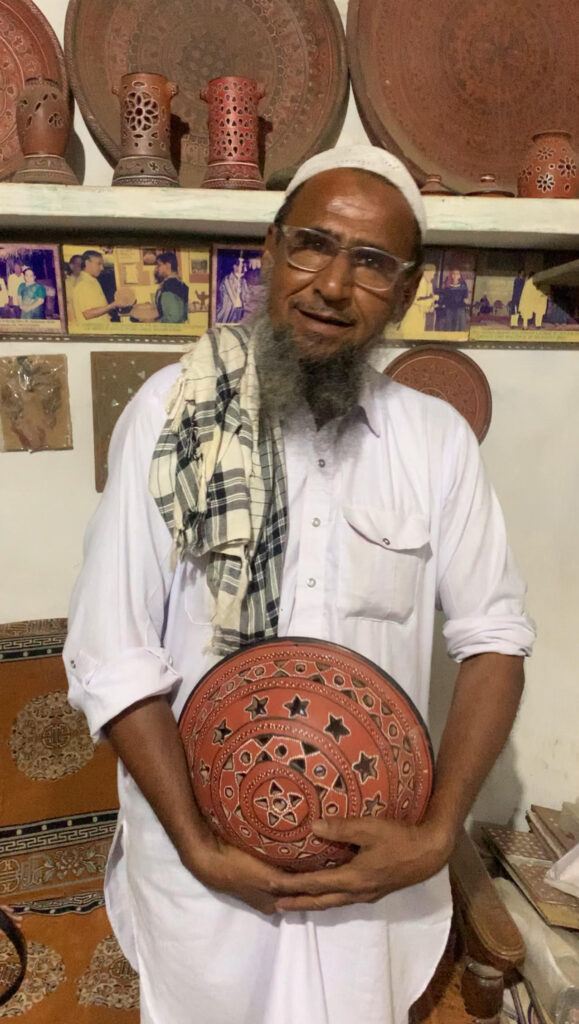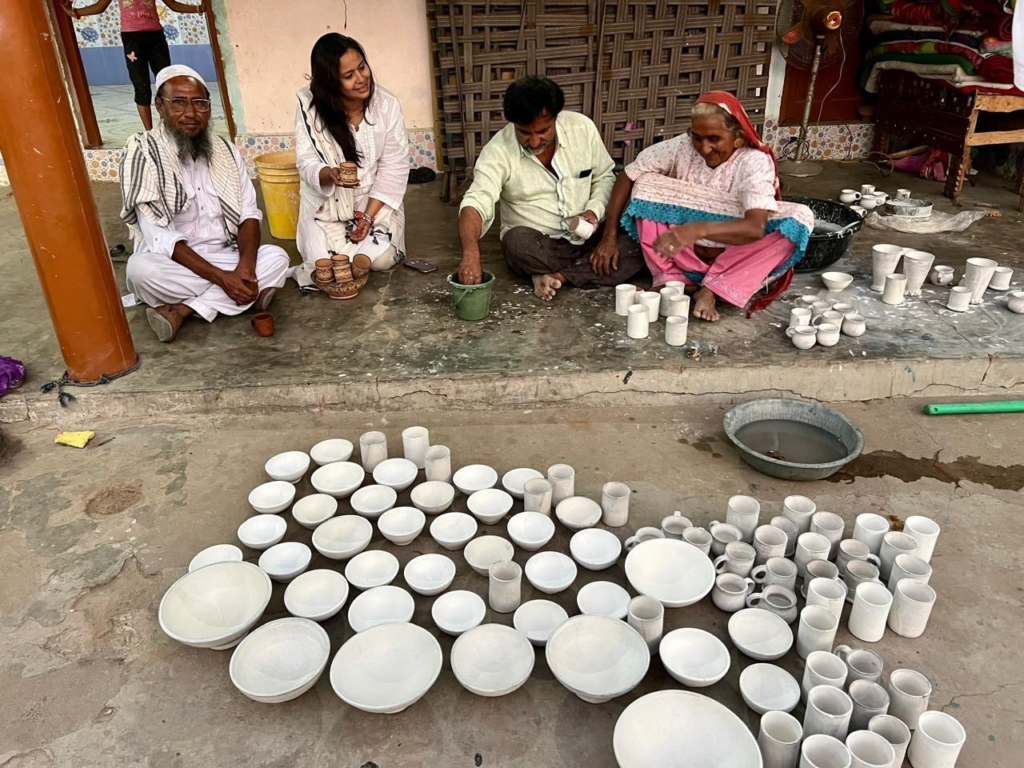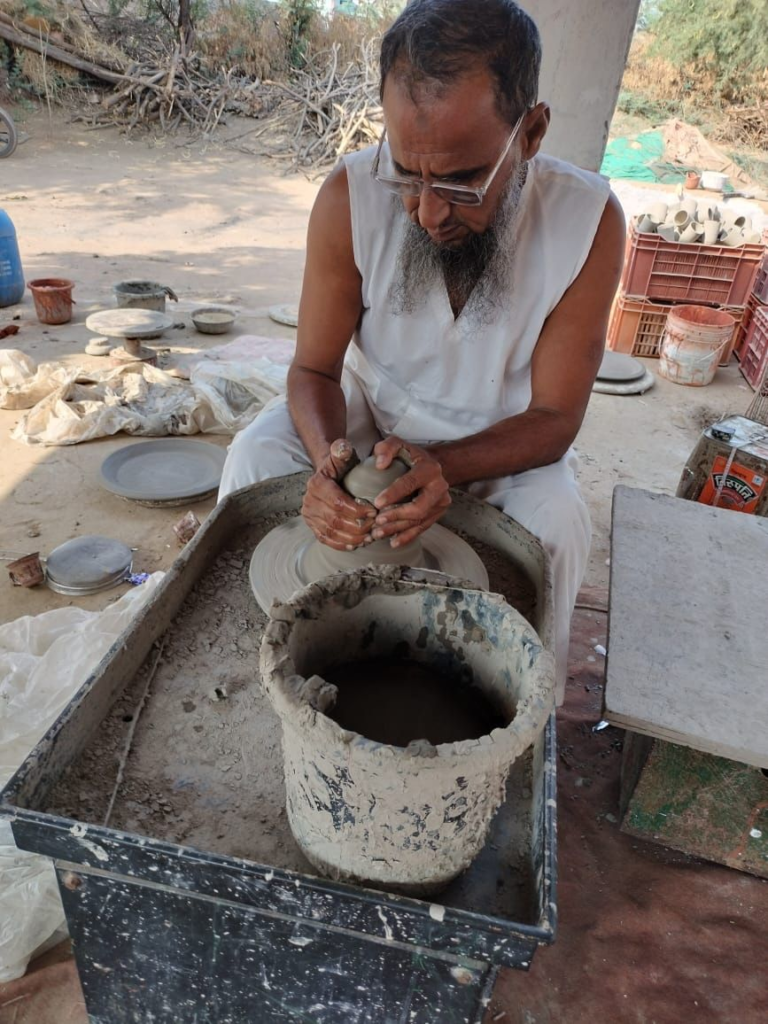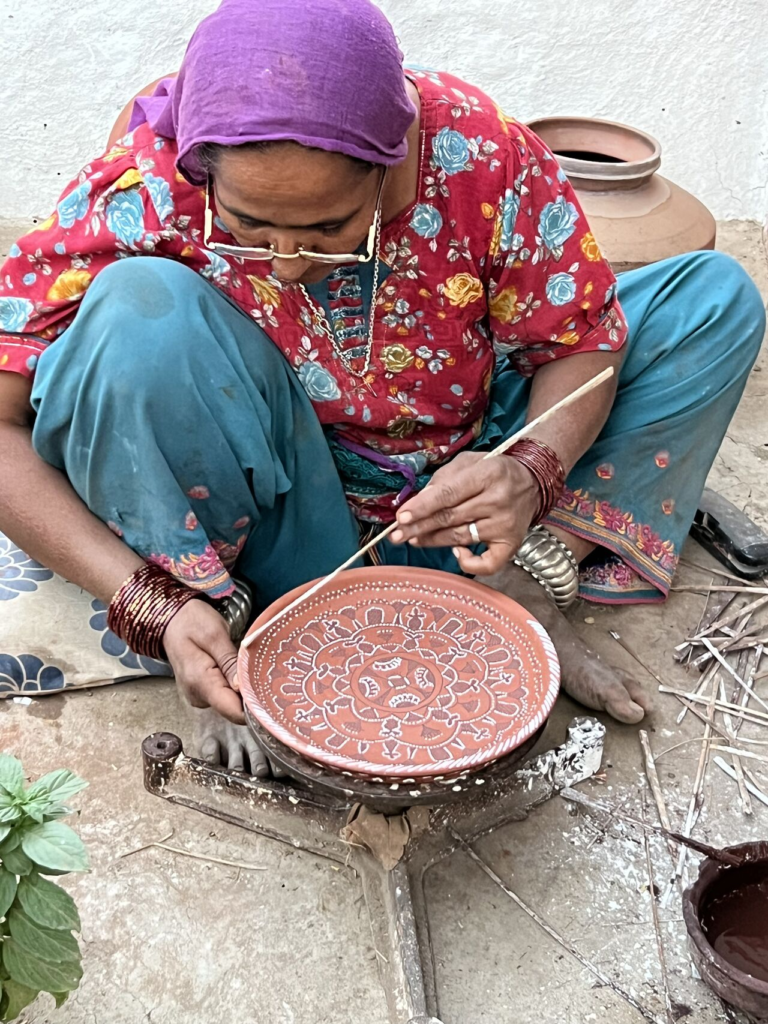Rubaru: Meet The R-tisan Who Is Keeping a 5000-year-old Ancient Tradition Still Alive
In the Embrace of Clay, an Old Legacy Breathes On
My journey into the heart of Kutch was unlike any other. Forget the usual tourist trails; the compass
pointed towards the whispers of ancient craft, towards hands that still held the stories of
generations. It was a quest led by a simple belief: that within these remote corners of India lies a
treasure trove of art, and more importantly, the unwavering spirit of an R-tisan, who keeps it alive.
Khavda is remote, truly remote. The drive there felt like venturing to the edge of a map, however,
the stark beauty of the landscape held a magnetic pull.
My purpose at Rtefacts is clear: to connect with the R-tisans, understand their art, and to somehow contribute to r’eviving these fading embers of heritage alive. And that’s how I reached to Abdul Ibhrahim’s workshop (or kaarkhana as they call it).

Upon reaching, I was taken aback by the beauty of his artwork. It felt like I was at a museum of the
pottery world. Abdul bhai has been working in the pottery business in Khavda for the past many
years. His hands, weathered and strong, bore the indelible marks of his art. As I sat down with him,
surrounded with Khavda’s unique pot, the air thick with the earthy scent of drying clay, he began to
share his story.
“I have been working with clay for as long as I can remember”, he began, his voice carrying a gentle
weariness. “My father, and his father before him, all breathed life into this Khavda pottery business,
it is in our blood, you see”. He gestured around his workshop, where plates and bowls adorned with
intricate, age-old patterns lay nearby, each stroke a whisper from the Indus Valley civilization.

Facing the Winds of Change
But as we spoke, the passion in his eyes dimmed slightly because he spoke of the present. “Times
have changed,” he sighed. “People don’t value the old ways anymore. Steel and plastic have taken
over our kitchens. Why would they buy a clay pot when they can get something that lasts longer, is
lighter?” His words echoed the sentiment I had encountered in my research – the struggle of
traditional crafts against the tide of modernity.
It was this fear, this yearning to preserve his heritage, that led Abdul Bhai to form the Khavda
Painted Pottery Association. He saw it as a collective effort, a way to amplify their voices and
perhaps find a larger market for their exquisite creations. His message resonated with a raw
honesty: Should he continue fighting this uphill battle, or should he let the art fade away?
Abdul Bhai then recounted the daily hardships. The scorching Kutch heat made the already
demanding physical labour even more gruelling. The constant exposure to dust and the fumes from
the traditional bhatti, the kiln, posed serious health risks. Yet, he persevered, driven by a natural
connection to his art.

He then spoke of the changing climate, a new adversary in his battle to keep Khavda pottery alive.
“The clay itself… it’s not the same anymore,” he explained, a hint of frustration in his voice. “It’s
become more saline. The old techniques, the ones passed down through generations, they don’t
always work as they used to.”
This shift in the very raw material he depended on had created unforeseen challenges, impacting production and adding another layer of uncertainty to his livelihood. Perhaps the most poignant part of our conversation was when Abdul Bhai spoke about the younger generation. “My children… they don’t want to do this work,” he confessed. “They see the struggle, the lack of appreciation. They want to go to the city, find easier jobs.”
It was a heartbreaking reality – the fear that this unique art form, deeply rooted in the soil of Kutch, might disappear with his generation. Standing there, amidst his craft – the unfinished pots, the age-old tools – the answer felt overwhelmingly clear. Abdul Bhai isn’t just a potter; he is a custodian of history, a living link to a tradition that stretched back in time. To let Khavda pottery die would be to lose a part of India’s soul and heritage.
More Than Pottery
My visit to Abdul Bhai wasn’t just an observation; it was an awakening for me. It reinforced my
commitment at Rtefacts to stand by these ‘R-tisans’, to bridge the gap between their exquisite
craftsmanship and a world that might otherwise forget. Every purchase from Rtefacts is not just
acquiring a piece of art; it’s an investment in preserving a cultural heritage, in empowering
individuals like Abdul Bhai to keep their traditions alive.

As I left Khavda, the dust swirling behind the cab, I carried with me not just the beautiful pottery I
had acquired, but also the weight of Abdul Bhai’s struggle and the burning desire to help keep the
soul of Khavda alive, one painted clay vessel at a time. The dust of the desert may swirl around
Khavda, but the resilience of its clay, shaped by the skilled hands of Abdul Ibrahim, continues to tell
a story that deserves to be heard, cherished, and most importantly, r’evived.

Leave a Reply